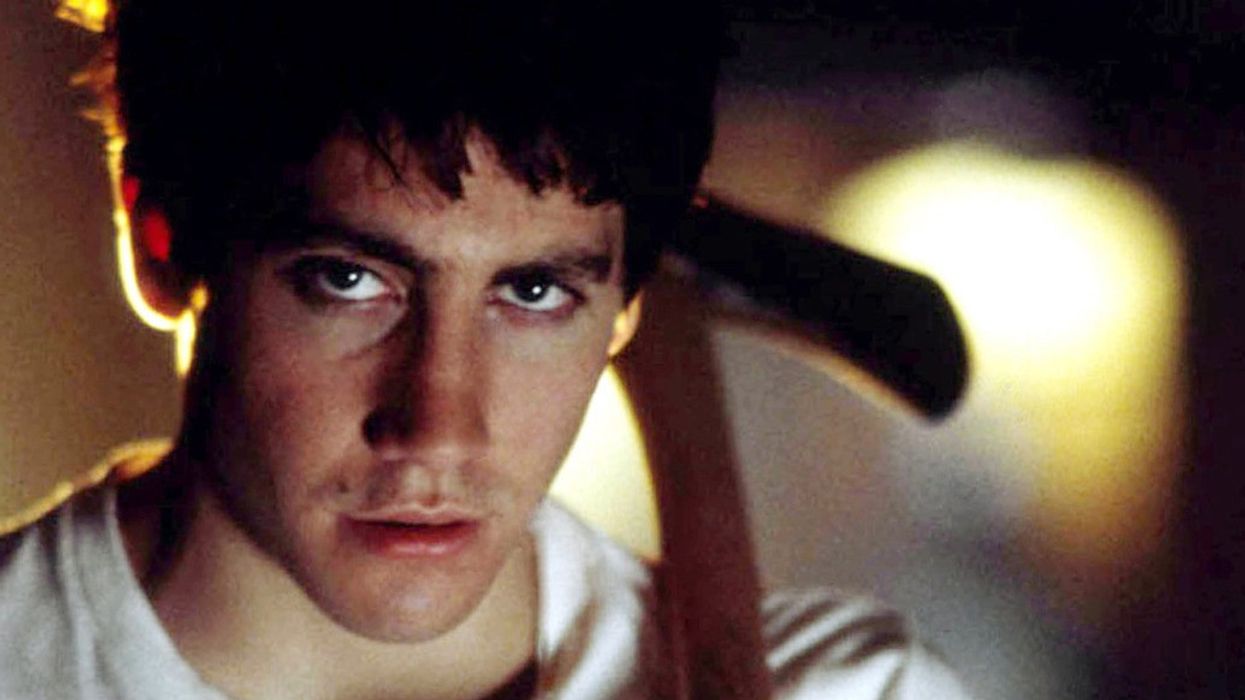Watch: How 'Donnie Darko' Depends on Sound
It's easy to forget that a film is the sum of its parts.

[Editor's note: Donne Darko spoilers ahead.]
Anything that has an effect on you, from an elaborate, multi-dimensional artwork to a reuben sandwich, has a structure. The structure, whatever it may be, enables delivery of an artist's story, political subtext, aesthetic background, or all three. Some works may try to call attention away from their structure with a busy surface—and yet it is these works that one finds the most complicated structures of all. (See David Lynch.) While studying films as models, try to take a look at how they're built. The underpinnings you discover may surprise you with their subtlety and their ultimate cohesiveness.
Music can reveal the ideas percolating in the mind of the filmmaker while making a film.
Music as foundational stone
Take, for example, Donnie Darko. Show me a person who "doesn't get" Donnie Darko, and I'll show you a person who loves Donnie Darko but just doesn't realize it. Incomprehensibility is the film's stock in trade, from its shocking beginning to its futuristic ending. The falling plane part, Donnie's facial expressions, the giant rabbit god: who can keep up? But beneath all the surface activity, characters grow and change, a clear problem is introduced, a clear solution is offered. Our hero, Donnie, wanders off by himself, only to return shortly. The end of the film reaches for a grasp at a cosmic outlook. In short, it's almost an old-fashioned story, if it weren't for that rabbit. And, like an old-fashioned story, it depends on the harmony of its parts for success.
A key part, argues this new video essay by Jose Angel Toro, is sound. And the use of sound in this film invariably serves its larger structure. For instance, the eerie track that floats around Frank, Donnie's towering rabbit friend, is meant to indicate that Donnie's life has been invaded by an alien presence; Toro even puts the Jackson Five behind a two-shot of Donnie and Frank to show how a different soundtrack might affect our perceptions.
Soundtracks can reveal the filmmaker's mindset
In some cases, Toro suggests, music and sounds can show you how a story is being told. In other words, it can reveal the ideas percolating in the mind of the filmmaker while making a film. For instance, in Donnie Darko, there is one scene that balances a sequence of Donnie setting fire to a man's house with a charming scene at the ballet with the man's wife and kids (the husband being away so the heist could take place). Toro follows his idea to its logical conclusion, viewing the ultimate way these activities are combined and threaded together with Janis Joplin playing in the background as inevitable, a sign that Donnie's trajectory will always inspire balking and fear, that he will most likely carry his tortured childhood with him wherever he goes.
Sound as storytelling device
More common sound effects—the plinks, splats, pings, pongs, boinks, sproinks—can be huge parts of a film's sound experience, as well. At one moment in the film, Donnie tries to push Frank, in the earliest glimmerings of a fistfight, but he can't. We get a thwop and electronic ripples, the same sound you get if you run into a wall in a video game, or do something else that "doesn't compute." This sound effect, in Toro's view, reinforces how totally alien the presence of Frank is, and how even in a film which exudes abnormality from its pores, we still might find one element or another ersatz. If that feeling can somehow be expressed in a film's sound as well as in its storytelling, then watching the film becomes all the richer an experience.
The most important thing for Toro, here and elsewhere, is that the director's intent always be either clear or dismantlingly disorienting, and that the music and sound effects should always serve the film's structure. This is how well-wrought movies are made.











